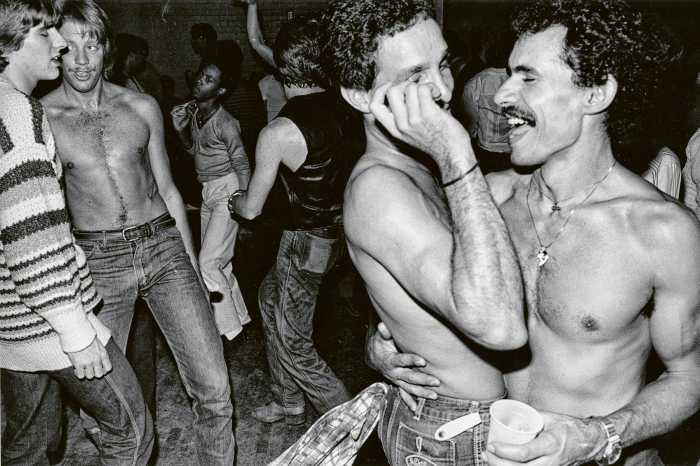BY STEVE ERICKSON | Since the ‘50s, art cinema and sex have gone hand in hand. Back then, the commercial success of Ingmar Bergman’s “Summer with Monika” didn’t owe nearly as much to its prescient depiction of frustrated, rebellious youth or to praise from François Truffaut and Jean-Luc Godard as to its brief glimpse of female nudity, which seems quite tame now.
Flash forward to the present day. Steve McQueen’s “Shame” opens the same day as “Sleeping Beauty.” Reportedly a bleak portrait of addictive, dysfunctional sexuality — I haven’t had a chance to see it yet — it’s been marketed as a titillating treat on the basis of its NC-17 rating and star Michael Fassbender’s full-frontal nudity.
With “Sleeping Beauty,” Australian novelist Julia Leigh turns to the medium of cinema and makes an unabashed artsploitation film. While full of both male and female nudity, Leigh’s film contains no sex. The nudity is largely unerotic, although heterosexual spectators may disagree. The men who get naked are all elderly. While the topless female prostitutes and waitresses are all conventionally attractive, their nudity is so common and so casual that one quickly gets used to it. “Sleeping Beauty” uses the highly charged subject of sex to speak about more personal issues, like its heroine’s general passivity.
Lucy (Emily Browning) is a young college student who doesn’t get along with her roommates. She works several menial jobs to support her studies. One day she sees an ad in the student newspaper for a waitress position. Not realizing how odd the job will turn out to be, she responds to it and discovers she will have to serve elderly men gourmet meals while topless. The job is simply a gateway into the world of prostitution, and Lucy eventually works as a “sleeping beauty.” Given a drug that knocks her out for eight hours, men are allowed to play with her body while she’s unconscious, but penetration is forbidden.
Coming from a female director, one might expect “Sleeping Beauty” to delve into the feminist debates around sex work and explore human trafficking or the merits of legalizing prostitution. This is not such a didactic film. If it explores the politics of sex work, it does so only in the most general terms. Lucy works in such a rarefied form of prostitution that her struggles have little to do with those of most sex workers.
“Sleeping Beauty” is obviously a fantasy derived from erotic literature like Pauline Réage’s “Story of O” and films like Luis Buñuel’s “Belle du Jour” and Stanley Kubrick’s “Eyes Wide Shut” rather than from reality. Lucy’s existence as a “sleeping beauty” is a metaphor for the rest of her life.
All that said, “Sleeping Beauty” doesn’t romanticize Lucy’s work as a prostitute. There’s nothing appealing about images of her johns burning her with cigarettes or dumping her unconscious body on the floor, although at least the latter is an accident.
Its most disturbing scenes, however, don’t involve sex work at all. They take place at a medical testing lab where she goes to earn money, during which a man sticks an enormous tube down her throat. Lucy — not to mention Emily Browning herself — appears to be fighting hard against her gag reflex. (Browning has said that reading this scene in the script gave her a panic attack.)
I don’t think it’s a coincidence that these scenes evoke the title of the most famous pornographic film ever made, “Deep Throat.” The lab technician objectifies Lucy’s body in ways at least as degrading as her johns and far more physically painful, without sexuality entering into the mix.
“Sleeping Beauty” isn’t porn, but it’s a hardcore art film. Its general tone has fooled some critics into thinking that Leigh rarely moves the camera, although she often does. She seems inspired by Austrian directors Michael Haneke and Ulrich Seidl. Her film’s lighting is often harsh, glossy, and uninviting, and she utilizes fades to black as punctuation and uses very little music. Fittingly, her script eschews psychological motivations and leaves lots of room for the audience to interpret Lucy’s actions. Leigh shows great confidence as a visual stylist and director of actors.
She also displays signs of pretension. A john’s monologue about an Ingeborg Bachmann story is needless and seems included to show off her literary knowledge. She occasionally overdoes the ambiguity — a key scene provides a refreshing moment of emotional catharsis, but it’s immediately followed by another one raising the possibility that it may be a dream. Tonally, the film suggests either an extremely dry black comedy or no sense of humor at all.
One can see why Jane Campion, who’s investigated similarly difficult realms of female desire in “The Piano,” “Holy Smoke,” and “In the Cut,” chose to act as the film’s presenter, alongside IFC Films.
If “Sleeping Beauty” evokes both literature and cinema from the past, there’s something very modern about its flaws and strengths. Viewers may never quite escape the suspicion that Leigh was largely animated by the desire to jump on the artsploitation bandwagon, but even so, she has plenty of her own to contribute.
Essentials:
SLEEPING BEAUTY
Directed by Julia Leigh
IFC Films
Opens Dec. 2
IFC Center
323 Sixth Ave. at W. Third St.
Elinor Bunin Munroe Film Center
144 W. 65th St.
































